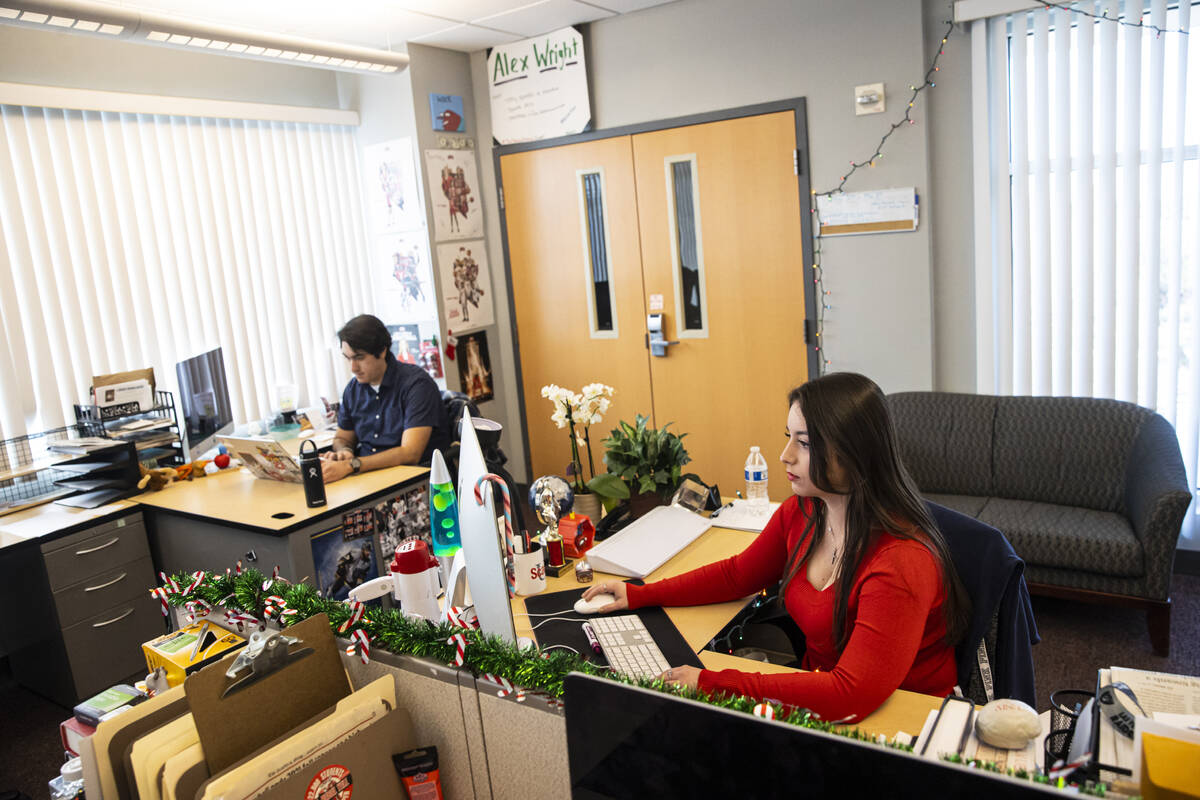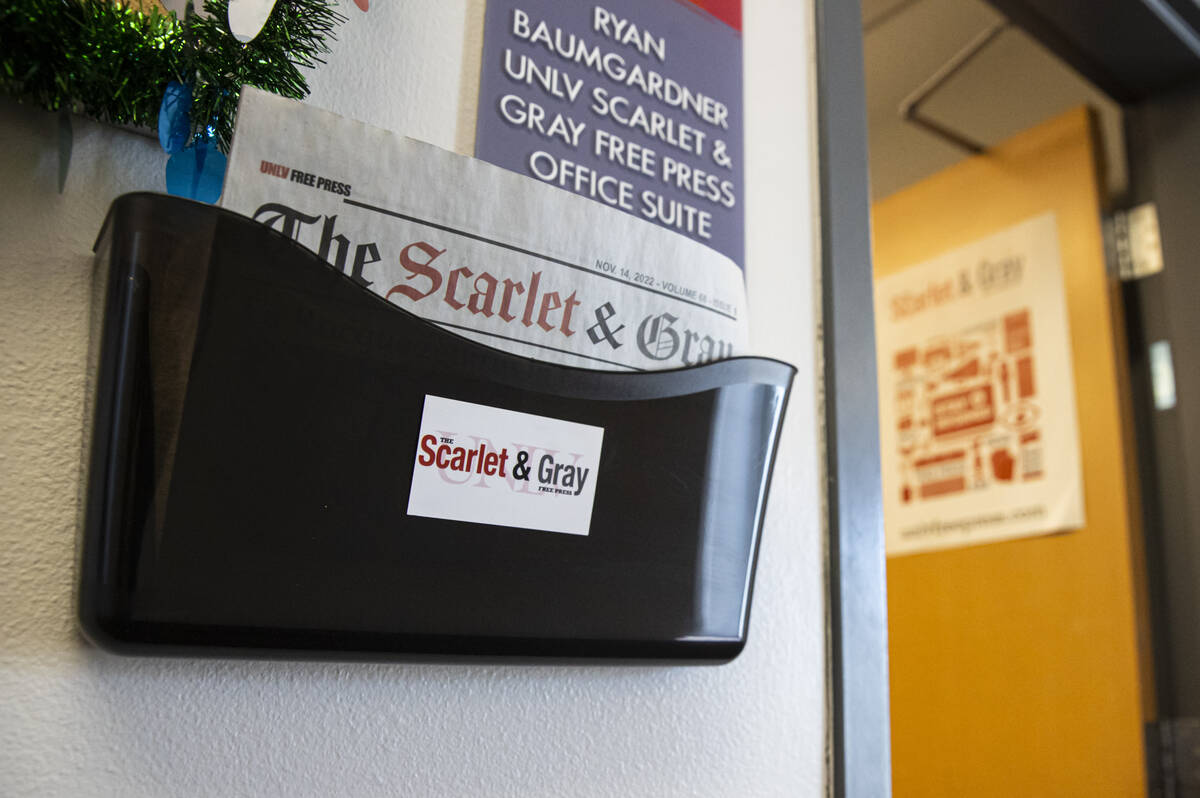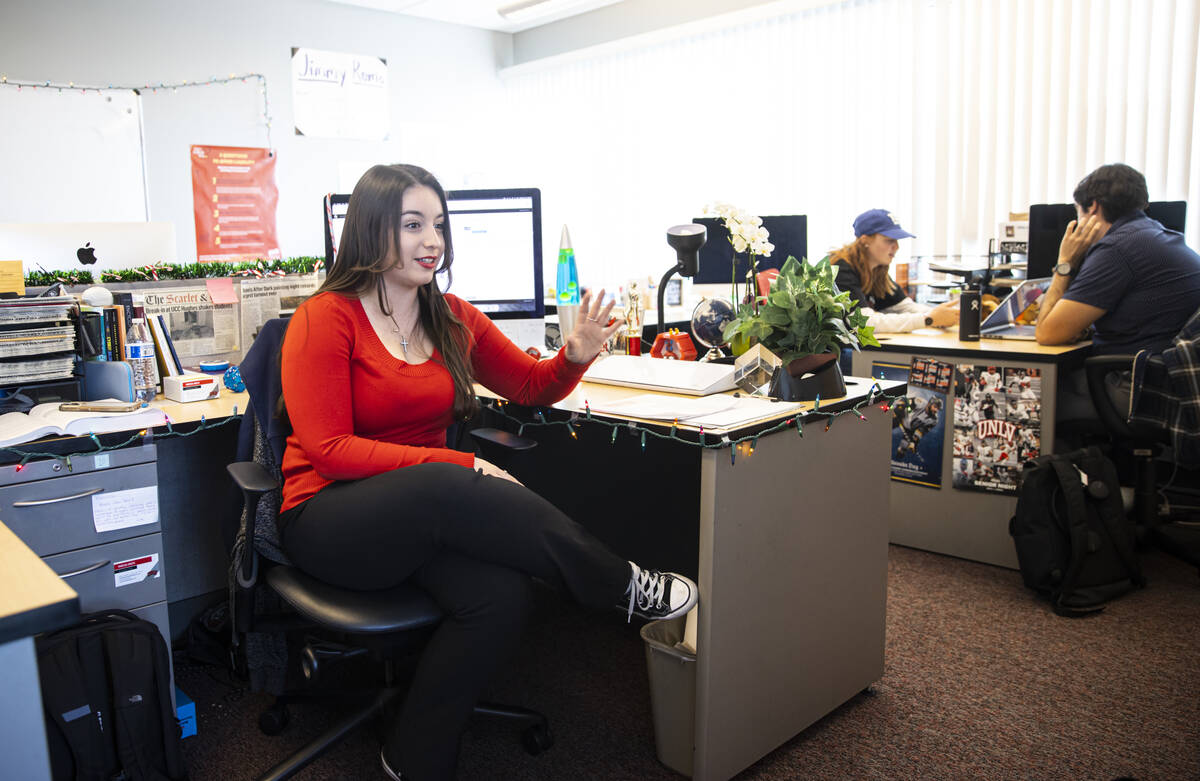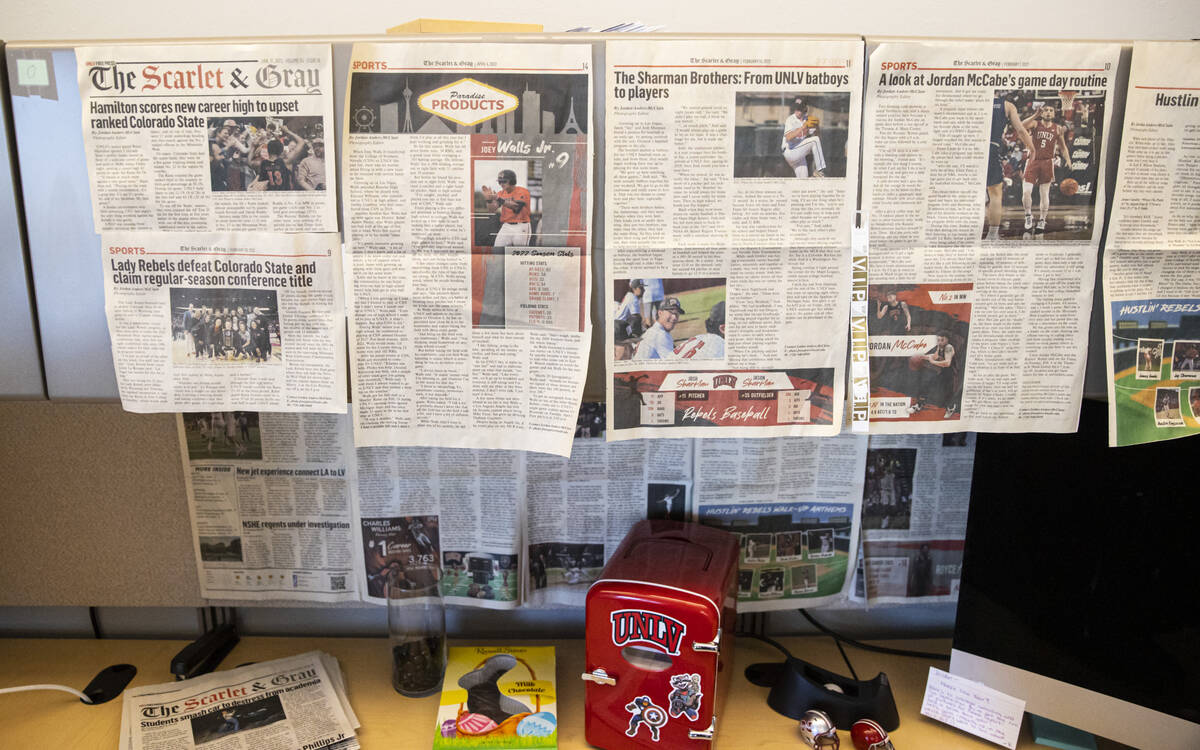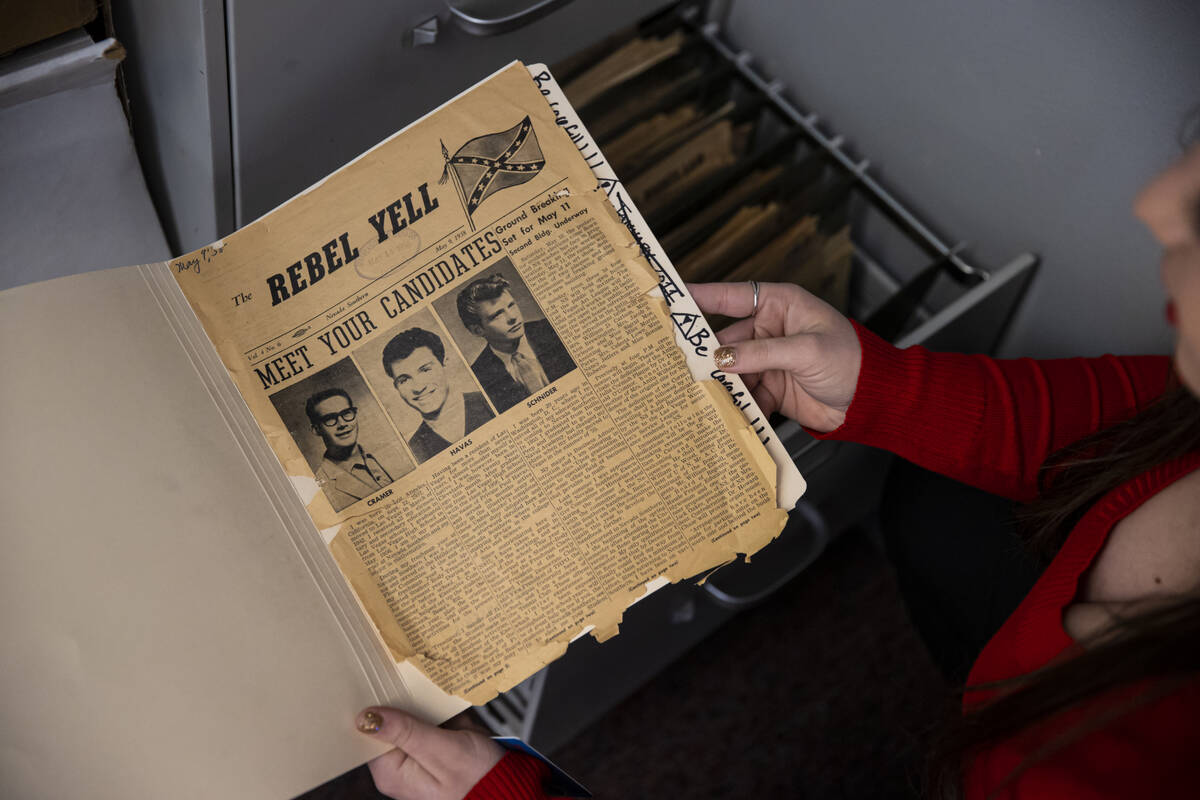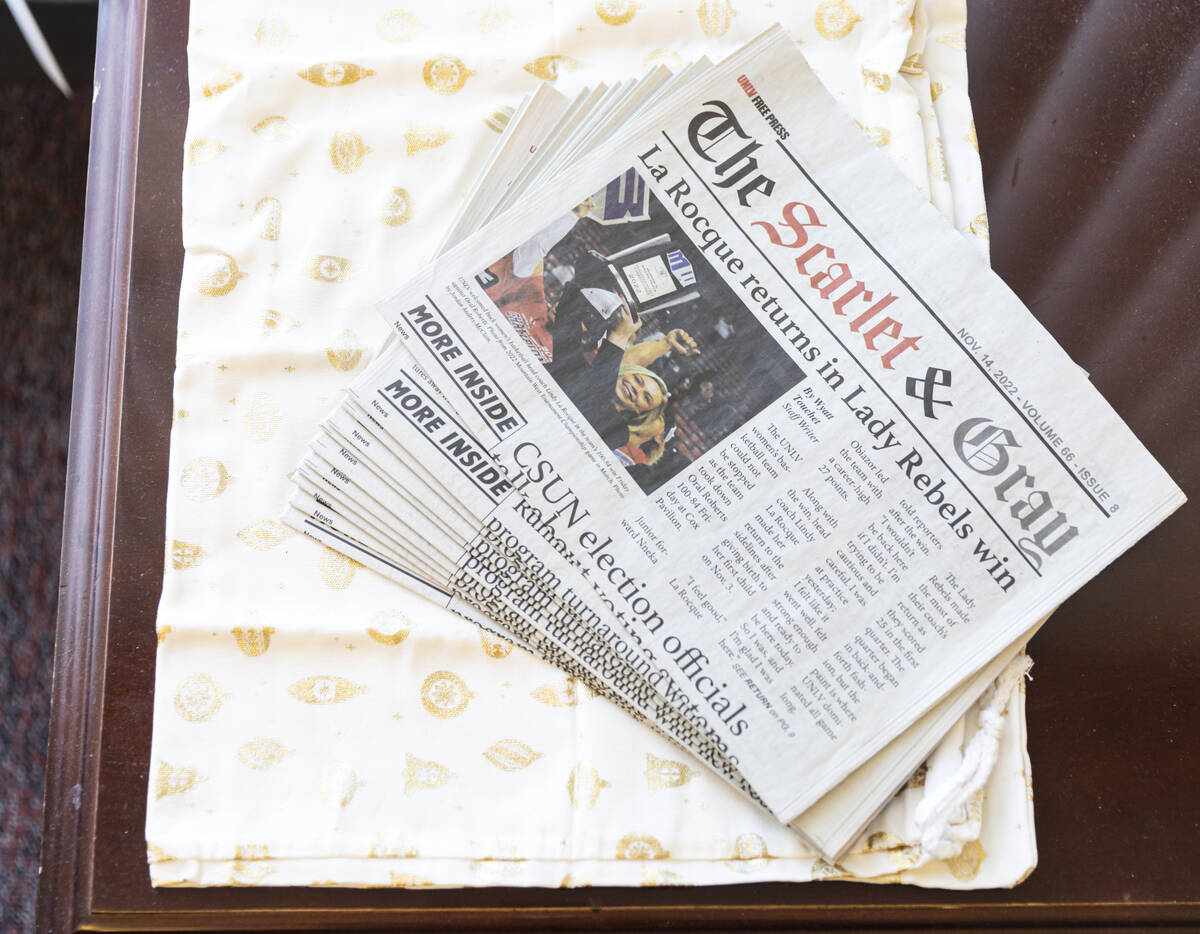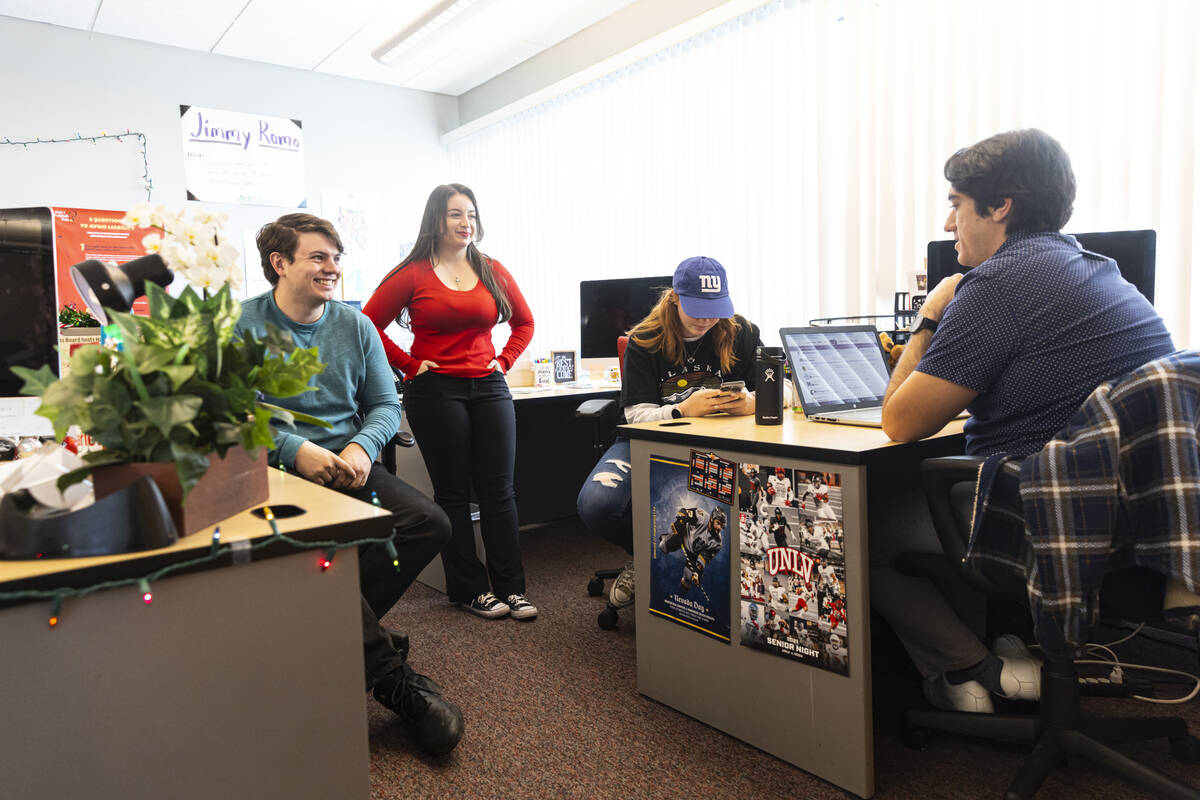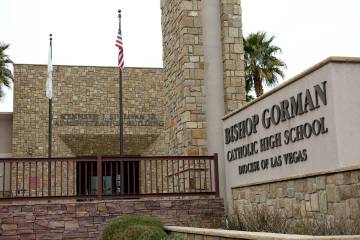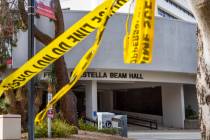Inside the latest push to fund UNLV’s student newspaper — and keep it alive
After years of navigating financial instability, students at UNLV’s Scarlet & Gray Free Press are proposing a new solution to fund their student newspaper.
The Board of Regents is scheduled to meet next week to discuss a proposal that could levy a 20-cent-per-credit fee on the roughly 30,000 students at the university that would go toward the operations of the paper.
UNLV assesses a number of fees on students, depending on which program they are enrolled in. Students in the dental school, for example, will pay different fees from those enrolled in the law school, while some fees are assessed on all students to fund services like student government, health services and the recreation facility.
But The Scarlet & Gray, which has operated for nearly 70 years, does not have a permanent funding source. As advertising revenue flagged and it received diminishing funds allocated by the university, various benefactors, including the Las Vegas Review-Journal and the university’s Student Affairs office, have helped keep the newspaper afloat in recent years.
“We try to make the most of it, but … we can’t afford a printer right now,” Managing Editor Hadiya Mehdi said. “Those are the vital things that we need as a newspaper, and we don’t have access to it because it’s not in our funds.”
But the new 20-cent fee proposed by the student journalists would amount to about $140,000 to fund a newspaper that is currently operating on a budget of $60,000 to $80,000, according to Editor-in-Chief Vanessa Booth.
If the fee passes, the newspaper would be able to continue operating as usual, with the added bonus of being able to recruit and retain students for positions that have fallen by the wayside over the years because of funding cuts.
But if it doesn’t pass, Booth said, The Scarlet & Gray may have to stop printing altogether, publishing news only on its website.
“I really hope that they listen to the needs of students and consider the historical impacts that voting yes on this will have in the future,” Booth said of the upcoming regents vote. “Student newsrooms are important. They’re crucial.”
‘Historical beef’
Amid declining financial contributions, the Review-Journal stepped in in 2017 with a proposal for the student journalists: It would donate $40,000 a year to keep the paper afloat while also printing the newspaper at no cost.
“The RJ has happily provided generous financial support of the UNLV student newspaper for a number of years now,” Review-Journal Publisher and Editor J. Keith Moyer said. “But we have always felt that the university should have more skin in the game with a more generous funding arrangement for the Scarlet & Gray. This student fee proposal is certainly a step in the right direction.”
The Review-Journal told the student newspaper this year that it could no longer continue printing the paper for free, and that it would be slowly pulling back from its $40,000 annual investment.
“The cost of newsprint is extremely prohibitive at this time and inflationary pressures are driving it even higher,” Review-Journal Executive Editor Glenn Cook said. “The Review-Journal regrets that it is no longer in a position to print the student newspaper at no cost.”
After seeing that the student paper’s current financial situation wasn’t sustainable, Scarlet & Gray staffers approached the Student Affairs office about implementing a new student fee.
Booth, who took over as editor-in-chief of the paper in September, said staffers were told that they needed to demonstrate that they had student support for a fee, either through a petition from the student body or through a letter from the Consolidated Students of the University of Nevada, Las Vegas, the university’s student government body.
It was a difficult sell for CSUN, an organization that has historically had a fraught relationship with the student newspaper, Booth said.
“There was just historical beef,” she said.
The paper also has had to overcome other challenges alongside its funding woes. Six years ago, the paper announced it was changing its name from The Rebel Yell after a push to distance the university from any ties to Civil War-era racism. Then it was forced to launch an online donation drive to raise money after it ran out of funding.
Matt Maxson, a former member of UNLV student government and a former editor for The Rebel Yell, said disagreements over how the paper should be funded extend back to his time at the university nearly two decades ago.
Maxson, who graduated in 2009, recalled the days when the newspaper was funded by a small percentage of CSUN’s budget and incredibly profitable.
But some members of the student government misinterpreted that relationship as one in which they were financing the newspaper, he said. Ultimately, the student constitution was amended so that CSUN no longer was required to give money to the newspaper, according to Maxson.
“We had figured this out a couple decades ago, and I think that CSUN really ruined it and really ruined the way that the paper was able to coexist,” he said.
Rick Velotta, an assistant business editor at the Review-Journal and The Scarlet & Gray’s adviser, said the student paper had a robust stream of advertising revenue when he first came on to advise its staff more than a decade ago.
As revenue started to dwindle, there was money available through CSUN, but the students decided they did not want to accept those funds because of the conflicts of interest that could arise, as the paper often reports on the operations of CSUN, he said.
“I think it’s been a learning experience for everybody. We kind of bring the newspaper business into the equation, not just writing stories and editing copy and things like that,” Velotta said. “We actually had to kind of look at the big picture in terms of what our expenses are, and Vanessa had to do a lot better job managing the budget.”
CSUN leadership ultimately did author a resolution supporting the newspaper’s efforts to propose a new student fee earlier this year, writing that the paper serves as a part of UNLV’s integral history, serves as the student voice and creates a sense of community.
‘Better off than we left it’
After getting the support of the student government and having the fee proposal vetted and signed off on by university officials, all that remains for the student journalists of The Scarlet & Gray is to take their case before the board that governs Nevada’s higher education institutions.
The Board of Regents is tentatively set to hear the proposal on the student fee at its meeting on Friday, Dec. 2 at 12:40 p.m., although the time of the discussion could change. If approved, the fee would take effect in the fall of 2023.
For Booth, the fee means leaving a legacy where future student journalists won’t have to navigate financial anxiety and uncertainty as they learn to develop their skills as writers.
“The reality is, this fee is not going to affect any of us. We’re all going to graduate,” she said. “It’s going to be for the next people who come. We just want the paper to be better off than we left it.”
But for Maxson, the former editor of the paper, the fee also is an opportunity for Nevada to reiterate its reputation as a community of journalists who support other journalists.
“It’s literally a service, and it’s not just a service to the students of UNLV,” he said. “It’s a service to the people that are learning to be the next generation of journalists, and I think that it is incredibly necessary.”
Maxson credited Mary Hausch, a longtime educator at the college’s journalism school and former managing editor at the Review-Journal, as just one of the incredible resources the university provided to so many burgeoning journalists.
“People in Nevada really support their journalists through and through,” he said. “I think (the fee is) important, I think it needs to pass, and I think that they should look at how we got in this mess in the first place.”
If the regents reject the fee, Booth said it won’t necessarily mean an end for the paper. The university could bring the issue up again for reconsideration, but it would require dedication and work from future staffers to take up the issue again and garner support from students.
In the meantime, Velotta said, staffers also are in the process of talking to other media outlets in Southern Nevada to potentially secure financial commitments from them, as well as working on getting their advertising back up to speed.
Mehdi, the paper’s managing editor, said the current funding situation has been limiting and has driven out students who could no longer afford to keep working at the paper.
The newspaper ultimately exists for students to leverage their voices and speak truth against systems of power, she said.
“Considering all the services that students pay for, I think one of the most important ones is paying for a voice, really,” Booth said. “I think that’s us. A student paper.”
As for what Mehdi will do if the fee does pass come Friday?
“First thing I’m doing? Getting that printer,” she said.
Contact Lorraine Longhi at 702-387-5298 or llonghi@reviewjournal.com. Follow her at @lolonghi on Twitter.



